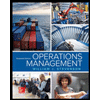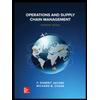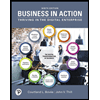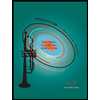9.4 A florist carries an average inventory of $12,000 in cut flowers. The flowers require special storage and are highly perishable. The florist estimates capital costs at 10%, storage costs at 20%, and risk costs at 50%. What is the annual carrying cost?
9.4 A florist carries an average inventory of $12,000 in cut flowers. The flowers require special storage and are highly perishable. The florist estimates capital costs at 10%, storage costs at 20%, and risk costs at 50%. What is the annual carrying cost?
Practical Management Science
6th Edition
ISBN:9781337406659
Author:WINSTON, Wayne L.
Publisher:WINSTON, Wayne L.
Chapter2: Introduction To Spreadsheet Modeling
Section: Chapter Questions
Problem 20P: Julie James is opening a lemonade stand. She believes the fixed cost per week of running the stand...
Related questions
Question

Transcribed Image Text:**9.4** A florist carries an average inventory of $12,000 in cut flowers. The flowers require special storage and are highly perishable. The florist estimates capital costs at 10%, storage costs at 20%, and risk costs at 50%. What is the annual carrying cost?
**Explanation for an Educational Website:**
To calculate the annual carrying cost of the florist's inventory, you need to consider the total percentage of costs applied to the average inventory value. The capital, storage, and risk costs are given as percentages:
- Capital Costs: 10%
- Storage Costs: 20%
- Risk Costs: 50%
**Calculation Steps:**
1. **Total Percentage of Carrying Costs:**
- Capital Costs = 10%
- Storage Costs = 20%
- Risk Costs = 50%
- Total Percentage = 10% + 20% + 50% = 80%
2. **Annual Carrying Cost:**
- Multiply the total percentage by the average inventory value:
- Annual Carrying Cost = 80% of $12,000 = 0.80 * $12,000 = $9,600
Thus, the annual carrying cost for the florist's inventory is $9,600. This involves the costs associated with capital tied up, storage needs, and risks due to the perishable nature of the flowers.
Expert Solution
INTRODUCTION
A firm's numerous expenses for keeping goods on hand are known as carrying costs. Taxes, insurance, personnel costs, and opportunity costs are some examples of carrying costs. By using effective warehouse architecture and employing computerized inventory management systems to monitor inventory levels, businesses may lower their carrying costs.
Step by step
Solved in 2 steps

Recommended textbooks for you

Practical Management Science
Operations Management
ISBN:
9781337406659
Author:
WINSTON, Wayne L.
Publisher:
Cengage,

Operations Management
Operations Management
ISBN:
9781259667473
Author:
William J Stevenson
Publisher:
McGraw-Hill Education

Operations and Supply Chain Management (Mcgraw-hi…
Operations Management
ISBN:
9781259666100
Author:
F. Robert Jacobs, Richard B Chase
Publisher:
McGraw-Hill Education

Practical Management Science
Operations Management
ISBN:
9781337406659
Author:
WINSTON, Wayne L.
Publisher:
Cengage,

Operations Management
Operations Management
ISBN:
9781259667473
Author:
William J Stevenson
Publisher:
McGraw-Hill Education

Operations and Supply Chain Management (Mcgraw-hi…
Operations Management
ISBN:
9781259666100
Author:
F. Robert Jacobs, Richard B Chase
Publisher:
McGraw-Hill Education


Purchasing and Supply Chain Management
Operations Management
ISBN:
9781285869681
Author:
Robert M. Monczka, Robert B. Handfield, Larry C. Giunipero, James L. Patterson
Publisher:
Cengage Learning

Production and Operations Analysis, Seventh Editi…
Operations Management
ISBN:
9781478623069
Author:
Steven Nahmias, Tava Lennon Olsen
Publisher:
Waveland Press, Inc.